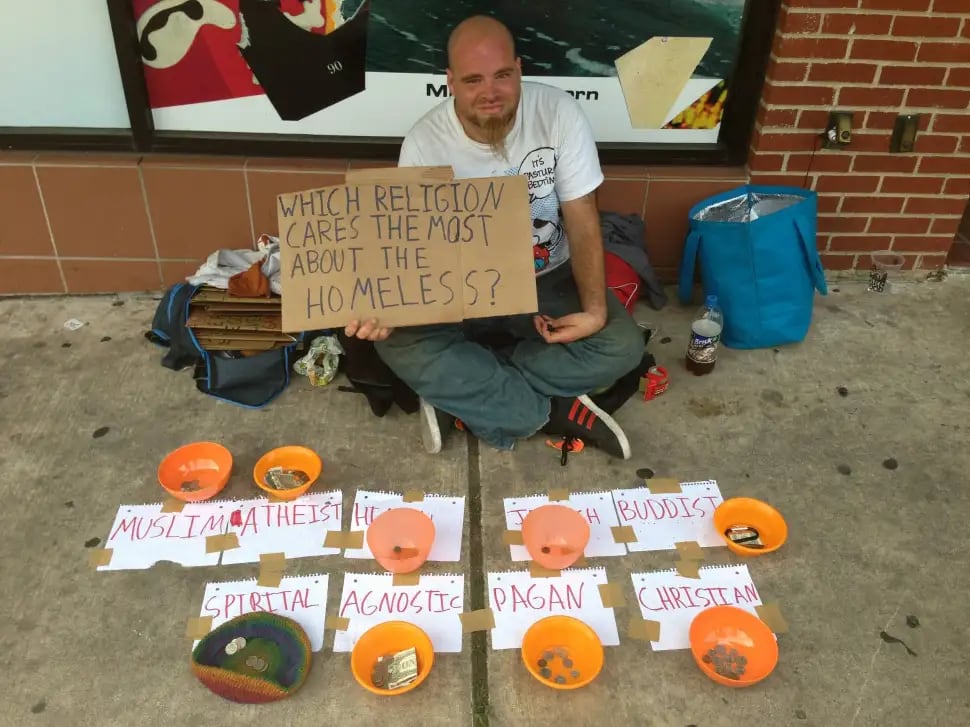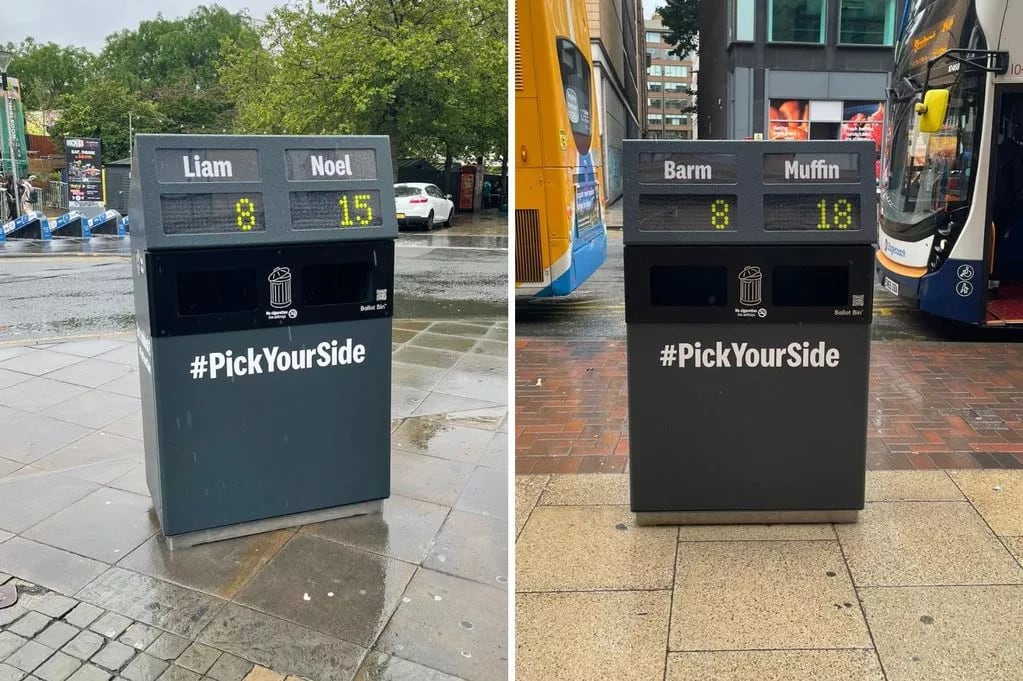In Iceland, it’s not really standard to tip. Everyone gets paid a minimum wage, even in the service industry, but that hasn’t stopped places from being creative in getting you to part with some coins. Iceland has also moved to a pretty cashless society, the last holdout (public transportation) now has NFC tap to pay. Coins and bills are reserved for the tooth fairy and children’s birthday parties.
There is a psychological trick that some ‘tipping’ system employ. When we see it, it puts a smile on our faces, but we know your games.

Making people choose changes the psychology from ‘should I give’ to ‘which do I give too?’. A good question should be pretty equal expecting people to put money and cast their vote to both options. Seeing your rival tip jar filling faster is even a stronger incentive to donate to redress the balance.
Cunningham’s Law states: The best way to get the right answer on the internet is not to ask a question; it’s to post the wrong answer. Seeing a tip jar with the “wrong answer” winning will illicit a quicker response than asking for a donation! This method is an interesting, and easy way to improve your response rate.

This example from 02013 was mentioned on BoingBoing. Using nine different bowls of popular world religions, a homeless man is using guilt and pier-pressure to get you to donate. Seeing how under-represented your faith (or non-faith) is doing, or wanting to make sure it stays on top induces people walking by to donate. But also it goes to your internal consistency. As part of your faith you were probably encouraged to help everyone, and the man’s sigh “Which Religion Cares The Most About The Homeless?” is a challenge to your internal consistency to prove to yourself what you believe is true.
Back in 01984, Robert Cialdini published his book “Influence: The Psychology of Persuasion”. In it he lists six methods you can use to influence others. It’s a great book, easy read and not too heavy on the academic aspect of psychology. We have a copy and are constantly reminding ourselves of the methods.
The factors he lists are agnostic to good and bad goals. The same actions could be used to influence you in a positive or negative way.
There are examples of “tip jars” which are employed for social good. In the UK there is a project called Ballot Bins. They are waste receptacles for cigarettes and trash, with a twist. Each bin is separated into two with a window or counter on it. Similar to the tip jars, they are getting you to ‘vote’ on something by placing your trash in your preferred side. This little ‘game’ incentives you not to throw your trash on the ground, but to dispose of it properly, with a tiny bit of psychology.

You can read more about Ballot Bins and #PickYourSide by the creators: a creative environmental charity – HubBub.
Is this manipulative, yes. Does it work, yes. Is it for the better, yes.
The power is not in deploying that tip jar, but in knowing and understanding how and why these tricks work. These psychological questions allow you to change habits for yourself and others, improve society and they keep you on your toes when others are trying to manipulate you for good and bad.
Next time you are trying to extract something extra, maybe it’s best to phrase it as a choice?